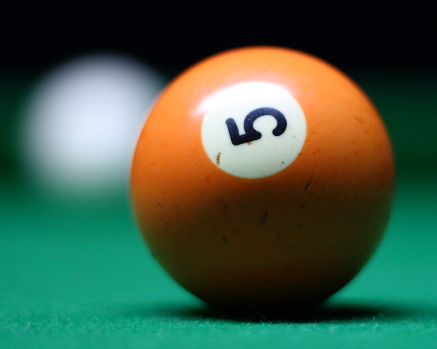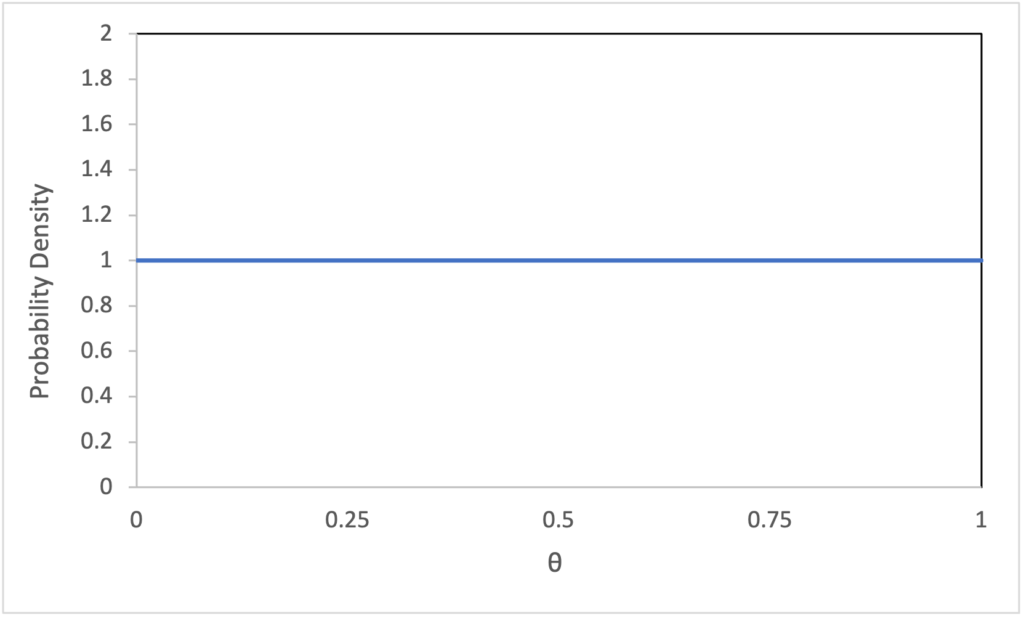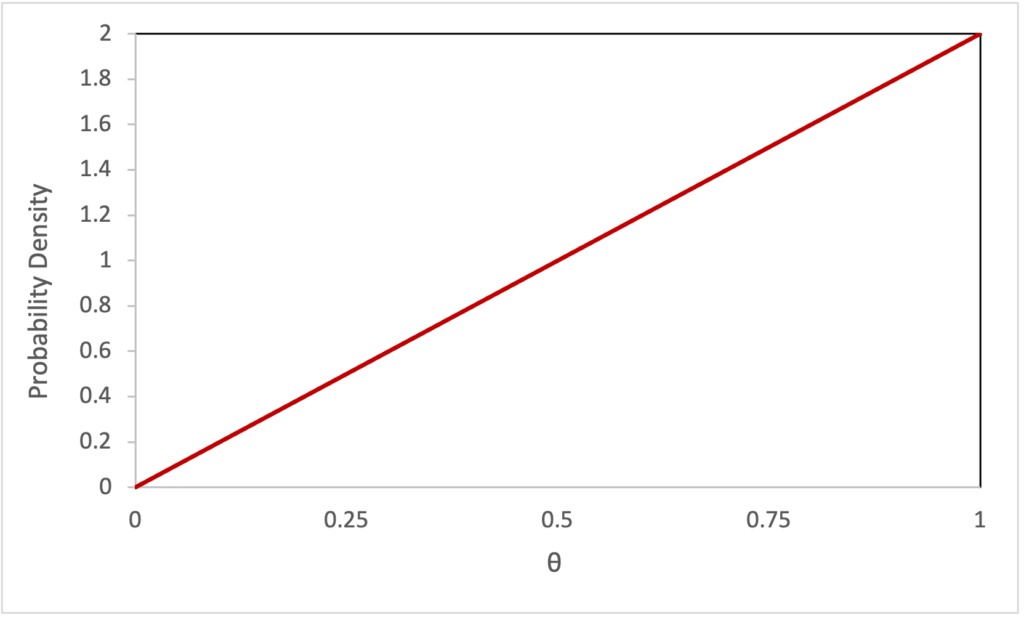© 26 January 2023 by Michael A. Kohn
Link to the pdf of this article
Introduction | Coin Problem | Bayes’s Rule: History | Bayes’s Rule: Derivation | Billiards Problem | Billiards (continued) | Endnotes | References
Billiards Problem (continued)

So, here is the billiards problem:
A cue ball Wis tossed from the right end onto a billiards table and ends up at an unknown distance θ from the right. Then an (orange) 5-ball O is tossed and ends up nearer to the right end than the cue ball W. This is arbitrarily called a “success”. Given this one success, what is the probability that the cue ball W made it more than halfway across the table? In other words what is P(0.5<θ<1)?
Again, the billiards problem is more difficult than the coin problem. We have moved from a discrete uniform probability distribution P(θ) to a continuous uniform probability density function p(θ). I will use upper case P(θ) for the discrete probability distribution, also called the probability mass function (PMF), and I will use lower case p(θ) for the continuous probability density function (PDF). If you are new to PDFs, they take some getting used to. Like a probability, a probability density is always greater than or equal to 0, p(θ)≥0, but it doesn’t have to be less than 1. In a figure, probability is no longer represented by the height of a discrete point but by the area under the continuous PDF (P(θa<θ<θb)=∫θbθap(θ)dθ). For the PDF to be valid, the area under it over the entire range of θ must equal 1 (∫+∞−∞p(θ)dθ=1).


The remainder of this article is available in the pdf. Link to the pdf.
(next) Endnotes